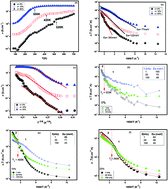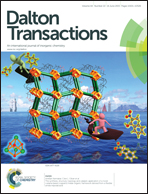Conduction mechanism, impedance spectroscopic investigation and dielectric behavior of La0.5Ca0.5−xAgxMnO3 manganites with compositions below the concentration limit of silver solubility in perovskites (0 ≤ x ≤ 0.2)
Abstract
This study presents the electrical properties, complex impedance analysis and dielectrical behavior of La0.5Ca0.5−xAgxMnO3 manganites with compositions below the concentration limit of silver solubility in perovskites (0 ≤ x ≤ 0.2). Transport measurements indicate that all the samples have a semiconductor-like behavior. The metal-semiconductor transition is not observed across the whole temperature range explored [80 K–700 K]. At a specific temperature, a saturation region was marked in the σ (T) curves. We obtained a maximum σdc value at ambient temperature with the introduction of 20% Ag content. Two hopping models were applied to study the conduction mechanism. We found that activation energy (Ea) related to ac-conductivity is lower than the Ea implicated in dc-conductivity. Complex impedance analysis confirms the contribution of grain boundary to conductivity and permits the attribution of grain boundary capacitance evolution to the temperature dependence of the barrier layer width. From the temperature dependence of the average normalized change (ANC), we deduce the temperature at which the available density of trapped charge states vanishes. Such a temperature is close to the temperature at which the saturation region appears in σ(T) curves. Moreover, complex impedance analysis (CIA) indicates the presence of electrical relaxation in materials. It is noteworthy that relaxation species such as defects may be responsible for electrical conduction. The dielectric behavior of La0.5Ca0.5−xAgxMnO3 manganites has a Debye-like relaxation with a sharp decrease in the real part of permittivity at a frequency where the imaginary part of permittivity (ε′′) and tg δ plots versus frequency demonstrate a relaxation peak. The Debye-like relaxation is explained by Maxwell–Wagner (MW) polarization. Experimental results are found to be in good agreement with the Smit and Wijn theory.


 Please wait while we load your content...
Please wait while we load your content...